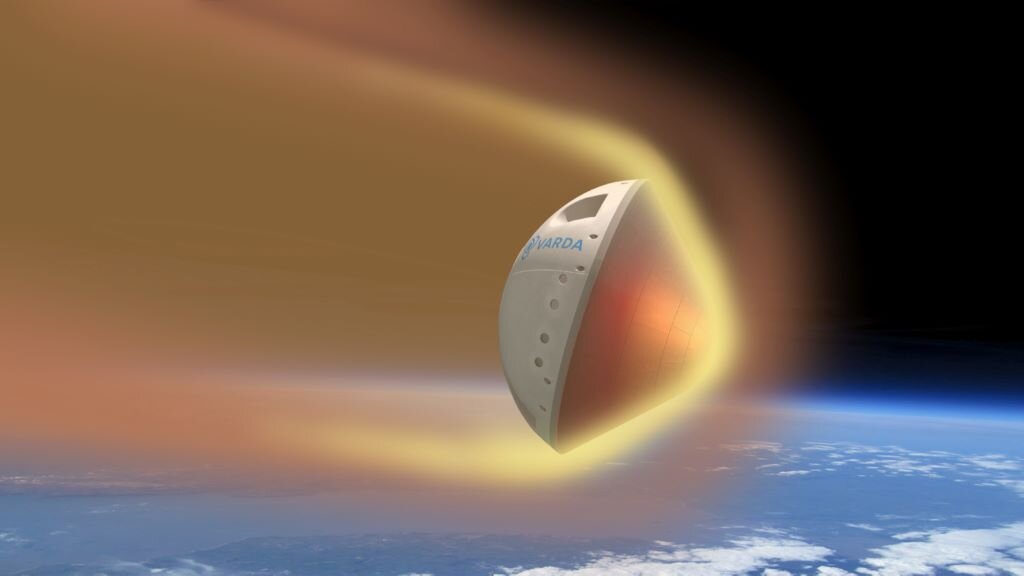
How Microgravity Revolutionizing Drug & Material Production?
Barekat Health and Pharmaceutical Group:The microgravity environment of space stations offers a revolutionary platform for advancing science and innovation in pharmaceuticals, materials science, and cutting-edge technologies. Beyond a scientific opportunity, it serves as a foundation for unprecedented discoveries and applications that could reshape industries and improve human life on Earth.
Gateway to Scientific Innovation
In recent decades, the boundaries of human knowledge have been pushed to unprecedented limits through scientific research. Among these frontiers is the utilization of unconventional and extreme environments such as outer space to advance pharmaceutical sciences and material production. Space, with its unique conditions—including microgravity, cosmic radiation, and the absence of Earth’s atmosphere—provides a rare and invaluable laboratory for conducting experiments.
Central to this exploration are space stations, particularly the International Space Station (ISS), which serves as an advanced and highly equipped platform for scientific innovation. Researchers from across the globe have used this environment to conduct experiments that are impossible to replicate on Earth, unlocking a new realm of possibilities in drug development and material science.
Microgravity, the state of near-weightlessness achieved in orbit, eliminates the effects of Earth’s gravity, creating a setting that profoundly alters the behavior of biological and chemical processes. This unique condition has already yielded significant breakthroughs, such as the production of purer protein crystals and advanced materials, paving the way for the development of highly effective drugs and innovative industrial applications.
This report delves into the critical role of microgravity in revolutionizing the production of drugs and advanced materials, exploring its advantages, challenges, and potential impact on industries ranging from healthcare to aerospace.
Microgravity in Drug Development
Producing Ultra-Pure Protein Crystals
One of the most remarkable achievements of microgravity is its ability to facilitate the production of ultra-pure protein crystals. These crystals are essential for the design of targeted drugs, particularly for diseases such as cancer, neurological disorders, and viral infections.
On Earth, the process of protein crystallization is often hindered by gravity, which causes imperfections and structural irregularities. In contrast, the microgravity environment of the ISS allows for the formation of protein crystals with unprecedented precision and purity. This enables researchers to study their structures in detail, leading to the design of highly specific drugs that bind more effectively to disease-causing molecules.
An example of this success is the development of cancer therapies based on protein crystals grown aboard the ISS. These therapies have shown enhanced efficacy and reduced side effects compared to traditional treatments, offering new hope for combating previously untreatable diseases.
Advanced Materials Production in Microgravity
Enhanced Material Properties
In addition to pharmaceuticals, microgravity has proven invaluable for producing advanced materials. On Earth, the manufacturing of materials is often affected by gravity, leading to defects and uneven distribution of components. In microgravity, these limitations are eliminated, enabling the production of materials with uniform structures and superior mechanical and chemical properties.
For instance, the microgravity environment enables the production of specialized alloys for aerospace and automotive industries. These alloys are stronger, lighter, and more heat-resistant than their Earth-manufactured counterparts. Similarly, polymers and semiconductors produced in microgravity exhibit enhanced quality and performance, driving innovation in electronics and medical devices.
Breakthroughs in Fiber Optics
A notable application is the production of advanced fiber optics, such as those made from zirconium fluoride. These fibers, when manufactured in microgravity, achieve exceptional purity and reduced signal loss, significantly enhancing data transmission capabilities. This has transformative implications for telecommunications and internet technologies.
Challenges of Manufacturing in Microgravity
While the advantages of microgravity are numerous, there are significant challenges to overcome.
High Costs
The cost of launching materials and equipment into space is a major obstacle. Conducting experiments aboard the ISS requires substantial financial resources, which can be prohibitive for many research projects. However, advancements in reusable rockets and private space ventures are gradually reducing these costs.
Logistical Constraints
Space stations have limited space, time, and resources for conducting experiments. Coordinating research activities with other projects aboard the ISS and managing the impact of cosmic radiation are additional challenges that require meticulous planning and innovation.
Biomedical Research in Microgravity
Understanding Disease Mechanisms
Microgravity offers unique opportunities to study biological processes that are masked by gravity on Earth. For example, it allows researchers to investigate changes in stem cell behavior, cellular reproduction, and intercellular communication. These insights have led to advancements in understanding diseases such as cancer, diabetes, and muscular degeneration.
Insights into Bone Loss
In space, the reduced mechanical load on bones accelerates bone density loss, providing a model for studying osteoporosis. This research has already contributed to the development of treatments for bone-related diseases on Earth.
Ethical and Environmental Considerations
Managing Space Debris
The increase in space-based activities raises concerns about space debris and its impact on the environment. Sustainable practices, including recycling and waste reduction, are essential to mitigate these risks.
Equitable Access to Space
As space becomes a hub for industrial activity, ensuring equitable access and preventing monopolization by a few nations or corporations is critical. International regulations and collaborative frameworks are necessary to promote fairness and inclusivity.
Microgravity: A Game Changer for Innovation Across Multiple Disciplines
The microgravity environment of space, particularly aboard space stations such as the International Space Station (ISS), offers much more than just a novel setting for scientific exploration. It represents a frontier that could redefine many fields—pharmaceuticals, materials science, medicine, and even everyday technology. Space-based research not only broadens our understanding of basic science but also accelerates innovation in ways previously unimaginable on Earth.
The absence of gravity on space stations allows scientists to observe natural phenomena in their purest form, free from the distortions caused by Earth’s gravitational forces. This makes space an ideal laboratory for studying the fundamental behavior of molecules, cells, and materials under extreme, yet controlled, conditions. In the absence of gravity, processes like fluid dynamics, heat transfer, and protein folding behave differently, offering new insights into everything from the origins of life itself to the creation of the next generation of cutting-edge materials and life-saving drugs.
Unveiling the Future of Space-based Pharmaceutical Production
The pharmaceutical industry stands to gain significantly from research conducted in microgravity. Beyond the production of purer protein crystals, there is potential for developing entirely new classes of drugs. Space’s unique conditions allow for the exploration of complex biological processes at the molecular level, which can lead to more effective therapies with fewer side effects. As researchers delve deeper into the molecular mechanisms that occur in microgravity, we may witness the creation of treatments that could cure or alleviate previously untreatable diseases, such as rare genetic disorders, neurological diseases, and cancers.
Furthermore, the insights gained from space-based experiments could fundamentally change the approach to drug design and personalized medicine. By understanding how drugs interact at a molecular level, we could customize treatments for individuals based on their genetic makeup, leading to more effective and targeted therapies.
Advancing Materials Science: From Aerospace to Consumer Electronics
Materials science is another field poised for a significant transformation due to microgravity. As research in space continues to progress, it becomes increasingly clear that microgravity enables the creation of materials with enhanced properties. For instance, the production of alloys with improved strength-to-weight ratios could revolutionize aerospace, automotive, and construction industries. These advanced materials, which are stronger, lighter, and more durable than those produced on Earth, could lead to more fuel-efficient airplanes, more durable spacecraft, and safer, longer-lasting infrastructure.
Additionally, the production of semiconductors and other high-performance electronic materials in microgravity offers the potential to vastly improve the performance and longevity of electronic devices. From quantum computing to next-generation smartphones, microgravity could play a key role in creating devices that are not only faster and more powerful but also more energy-efficient.
Impact on Human Health & Space Exploration
The implications of microgravity research extend beyond terrestrial applications. Space exploration itself stands to benefit greatly from advancements in materials and medical research conducted in space. As we plan for longer missions to the Moon, Mars, and beyond, it will be crucial to have materials and technologies that can withstand the harsh conditions of deep space. The development of stronger, lighter materials, and drugs that can support astronauts’ health over extended periods, will be essential for the success of these missions.
For example, long-duration space missions expose astronauts to the risks of bone density loss, muscle atrophy, and radiation exposure. By studying how these conditions progress in microgravity, scientists are not only improving astronaut health but also developing treatments for similar conditions on Earth, such as osteoporosis and muscle-wasting diseases.
Road Ahead: Sustainability, Ethics, & Collaboration
While the potential for space-based research is vast, it is equally important to address the ethical, environmental, and logistical challenges that come with it. As space becomes an increasingly valuable resource, it is crucial to develop sustainable practices that minimize environmental impact. This includes managing space debris and ensuring that space-based activities do not contribute to the growing issue of “space junk.”
Ethical concerns surrounding space exploration are also growing. As private companies and nations vie for control of space resources, it is essential to establish global frameworks that ensure equitable access to these opportunities. International cooperation will be key to ensuring that the benefits of space-based research and development are shared widely and fairly.
Furthermore, the development of space industries should be accompanied by efforts to foster public-private partnerships, invest in space infrastructure, and promote transparency. This will help create an environment where innovation can flourish while also addressing concerns related to the monopolization of space resources and technology.
Future Prospects: A Vision for Space-Based Manufacturing
Commercial Space Stations
As space technology advances, the vision of dedicated commercial space stations for manufacturing is becoming a reality. Private companies such as SpaceX and Blue Origin are pioneering efforts to make space more accessible for industrial purposes. These platforms could host specialized facilities for drug and material production, revolutionizing industries on Earth.
Broader Access to Microgravity Research
With the anticipated reduction in launch costs and the growth of international collaborations, access to microgravity research is expected to expand. This will enable more companies and institutions to leverage space-based environments for innovation, fostering a new era of scientific discovery and industrial development.
Pioneering a New Era of Scientific Discovery &Technological Advancement
In conclusion, the microgravity environment of space stations offers an extraordinary opportunity to push the boundaries of science and technology. From advancing healthcare and drug development to creating the next generation of materials, the potential of space-based research is immense. While challenges such as cost and logistical complexity remain, ongoing innovations in space technology and international collaboration provide hope that these barriers will be overcome.
As we look toward the future, we may be on the cusp of a new era in which space-based manufacturing and research not only support exploration and commercial endeavors but also transform life on Earth. With the right investments, policies, and collaboration, the research conducted in microgravity could unlock a future of unprecedented scientific and technological breakthroughs, benefiting humanity for generations to come.
-
Voice of Life in World of News — Redefining Health Journalism in the Information Age

-
Senior Health Officials & Barkat GD Visit Sobhan Oncology

-
Barkat Group specialized meeting

-
Safa Appointed as Barekat General Director

-
Barekat Health & Pharmaceutical Group at the 10th Iran Pharma Exhibition

-
Ali Safa visits Sobhan Oncology & Sobhan Darou

-
Pirsalehi & Safa visit Saman Daroo 8 Knowledge-based Company

-
Barekat Managing Director Visits Samen Pharmaceutical Company

